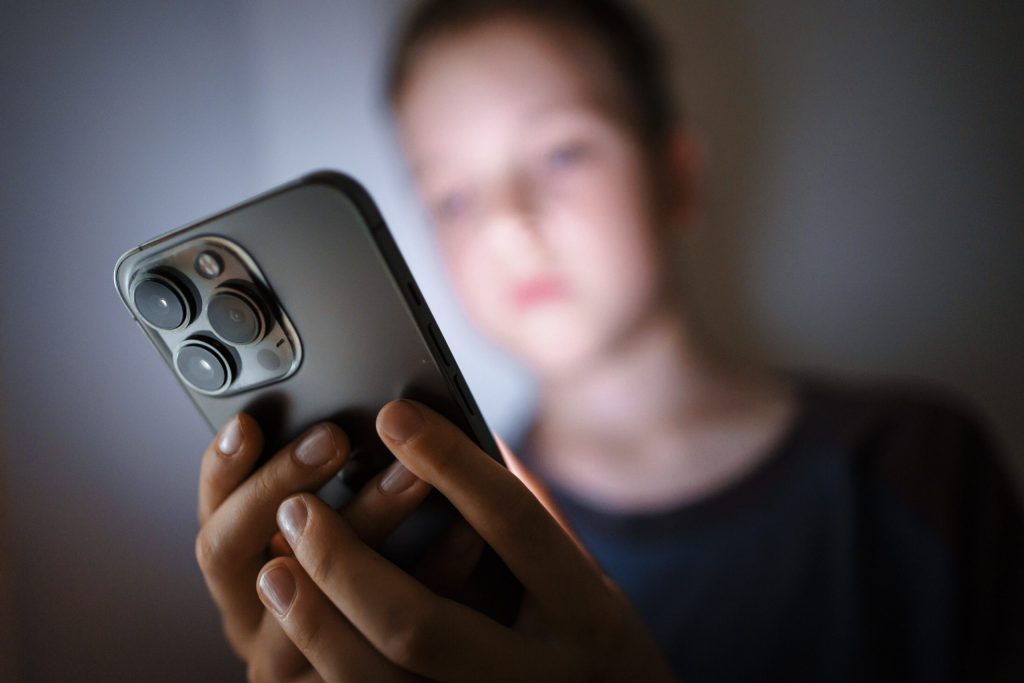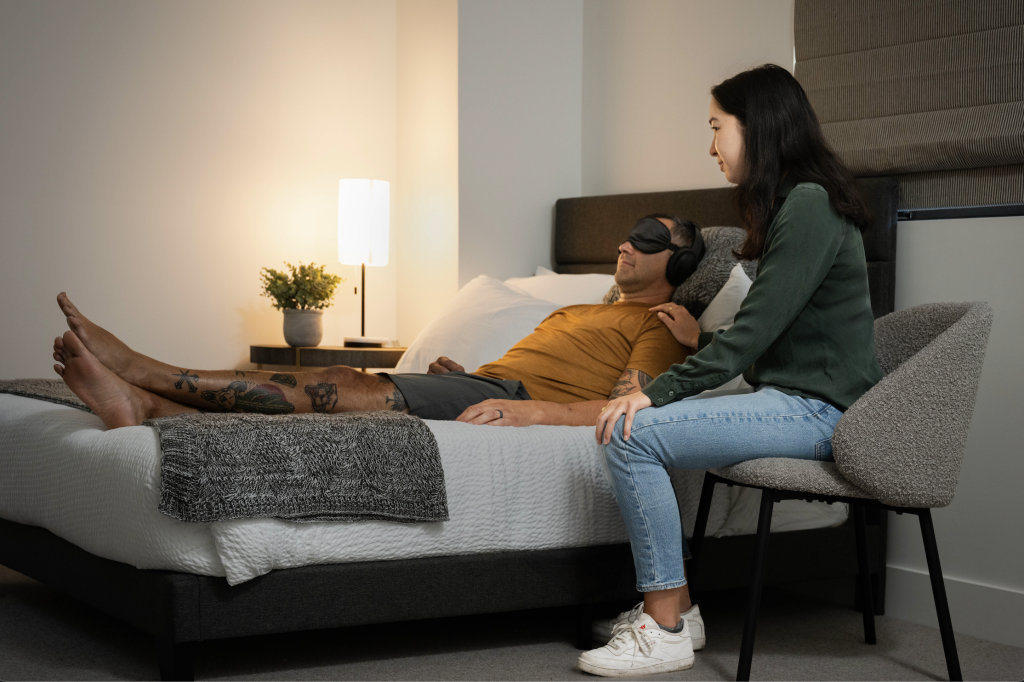What’s the connection between phone addiction and teen depression? Colorado Health leader wants to seek answers
Vail Health Behavioral Health Innovation Center Director Dr. Charles Raison says just putting the phone away before bed can have an impact

Thomas Trutschel/AP
Most adults spend too much time on their phones, and it is harming their mental health.
Dr. Charles Raison, psychiatrist and director of the Vail Health Behavioral Health Innovation Center, attributes some of the cause for rising depression and suicide rates to phone addiction. He wants to build a study at the center to examine how removing phones from the hands of teens may help their mental health.
Phone addiction contributes to rising depression, suicide rates
The average American spends over five hours per day looking at their mobile device.
A recent study out of the University of Texas at Austin showed that adults who blocked mobile internet from their smartphones (but not texting or calls) for two weeks improved their mental health, subjective well-being and attention span. Of the more than 450 participants, 71% reported improved mental health.
“The data that over the last 15, 20 years, depression has been increasing in the United States, I think it’s robust,” Raison said.
Rates of suicide have also climbed.
“That really suggests something is going wrong,” Raison said. “If you look at the rising suicide rate, it’s all in younger people. People under the age of 35, but especially … teenagers under the age of 24. Late adolescence, early adulthood — something is going wrong there.”
Raison attributes the rising rates of depression and suicide, in part, to the mental impacts of phone use.
“Studies are beginning to show that the phone is like a drug,” Raison said. “These phones are really, really addictive. They’re designed to be addictive.”
Cell phones capitalize on humans’ interest in novelty to keep them engaged.
“Human beings, like all animals, evolved to have brains that respond to novelty,” Raison said. “When you keep something the same all the time, the brain begins to ignore it because it doesn’t have to expend energy on it. … What the phones do, what the scrolling does, is it gets people hooked on the novelty.”
While cell phones and mobile apps provide quick hits of dopamine, it does not have the same effect as naturally earned dopamine.
“We evolved to do the journey, and if you don’t do the journey, you may get this rush initially, but over time, what addictive things do is get less and less pleasure and more and more misery, and you just have to keep doing it,” Raison said.
In addition to being addictive, cell phones shorten attention spans, foster social comparison and keep users from doing other, real-life activities. All of these can be particularly impactful for adolescents.
“It’s not just the time you’re spending on your phone, it’s the time that you’re not doing other things,” Raison said. “(If) you’re a young person, you’re not playing sports; you’re not out in the sunshine; you’re not actually engaging with real human beings.”
Behavioral Health Innovation Center moving toward adolescent mental health work
Technology like cell phones and artificial intelligence has impacts on the emotional well-being of all users, but particularly young people, Raison said.
Raison is leading the Behavioral Health Innovation Center toward researching interventions that may improve adolescent mental health.
“If you have been depressed for years and years, it kind of burns into the head. It’s really hard, you really struggle,” Raison said. “What we want to do is get upstream of that. Adolescence is very often when the road takes a wrong direction.”
While the Behavioral Health Innovation Center’s current studies on enhancing the effects of non-pharmaceutical interventions for treating depression — OPTIMIZE looks at psychedelics, while CHILL’D looks at heat and cold — are not suited for adolescents, Raison has ideas for other projects that would be more appropriate.
“Because BHIC is interested in these novel treatments for which there is some evidence of efficacy, many of which are ancient and have been employed by ancient spiritual traditions, can we responsibly explore how we might be able to do some of these in adolescents?” Raison said.
Raison is particularly interested in testing that immerses teens in total darkness with no distractions — especially phones — for a period as short as 30 minutes.
“Time-limited exposure to darkness might hold promise for both helping kids get a deeper understanding of themselves and also helping them sense what it’s like not to be on the phone for a while,” Raison said.
Artificial intelligence takes advantage of the evolutionary process
Artificial intelligence taps into a phenomenon called evolutionary mismatch to keep users engaged.
“One of the core understandings of human begins from an evolutionary perspective is that we are this remarkably social species,” Raison said.
“Given that that’s who we are, we know from so many studies that positive, supportive, realistic interactions with other people, of all the things in life, that’s the strongest predictor of being happy with your life, well-being, health,” Raison said.
Evolutionary mismatch is “when circumstances change faster than evolutionary processes can catch up with,” Raison said.
Classic examples of evolutionary mismatch include sea turtles choking on plastic bags because they are programmed to eat anything that looks like jellyfish, and birds that sit on rocks that look like eggs.
Artificial Intelligence is dangerous because the machine talks back, and often in a sycophantic manner.
“We have a module as human beings that if an entity seems to be talking to us, providing stuff to us, we think it’s conscious,” Raison said. “This is what (AI) is leveraging. … You talk to your AI, and it seems like there is somebody there. This is really problematic, because the problem with evolved systems is they can be hijacked, they can be gamed.”
Additionally, when people use artificial intelligence to replace human companionship — to serve as a partner or a therapist — they miss out on essential elements of human connection that lead to better mental health.
“If you fall in love, your dopamine goes up. If you win a contest, your dopamine goes up,” Raison said. “If you shoot up heroin, your dopamine goes through the roof. And what happens to people is they just bypass life.”
“Evolved needs, they evolved to be provided in certain ways, and because that’s how they evolved to be provided, when we get (dopamine) in those old ways, we feel better,” he continued. “But they can be short-circuited by these technological things.”

Take breaks from the phone for better mental health
Raison advised parents of young children and adolescents to minimize their interactions with technology when possible.
“It’s very hard, but in a perfect world, the longer you can keep a kid away from (scrolling) or being on the computer all the time, the better off they will be,” Raison said.
For busy people who cannot take extended breaks from their phones, Raison recommended putting the phone away before bed and taking up reading instead.
“It’s hard to stop. But if you stop, you feel better,” Raison said.
“Instead of laying in bed and ruminating about everything that’s wrong with the world and in your life …read,” Raison said.
People can also consider “taking vacations where you unplug,” Raison said.
“I think that is a huge untapped resource,” Raison said.










